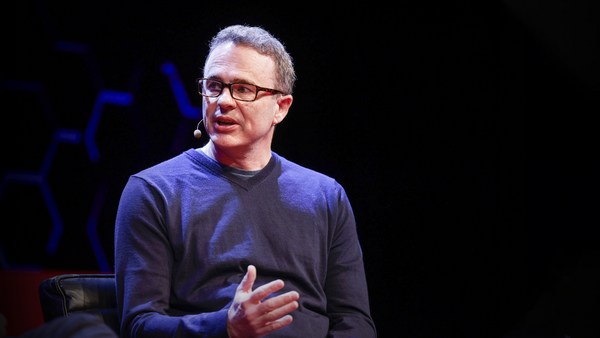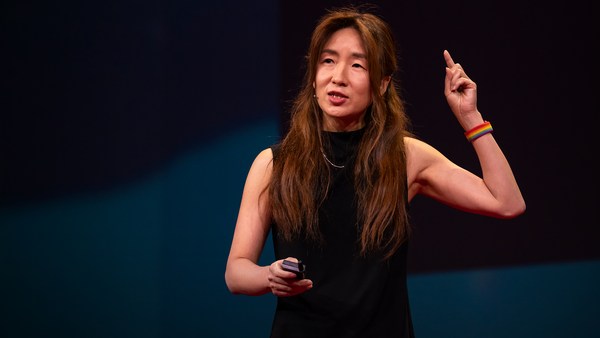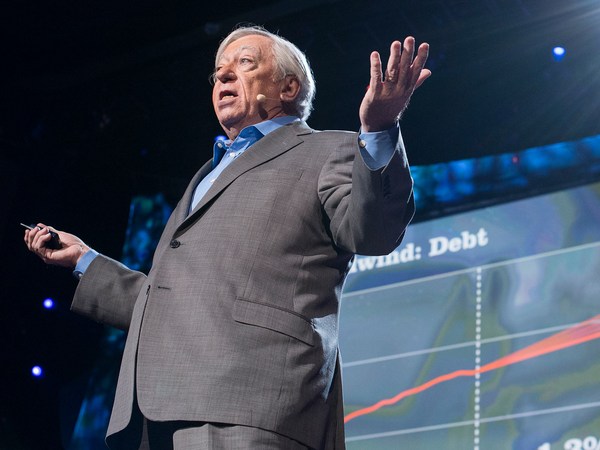Well, today, something is happening in technology that has never happened before. Five innovation platforms are evolving at the same time. Never happened before. You have to go back to the early 1900s to see three platforms evolving at the same time. You might call them general-purpose technology platforms. Back then, it was telephone, electricity, automobile. Game-changing.
Well, today we have five innovation platforms evolving at the same time. And they're changing growth dynamics incredibly. So they are highly catalyzed by artificial intelligence as you see here. But robotics, energy storage, AI, blockchain technology and multiomic sequencing.
The growth dynamics are changing in a way, it reminds me, I got early in the business, the 1980s, I was in meetings where the going assumption was growth, if it accelerated, it would decay very quickly back down to nominal GDP growth. And that was a function of the horrors we had been through in the '70s. So it was very hard to get investors to believe that there were companies out there that were going to help generate productivity growth and actually have sustained growth rates.
We get into the internet time, and we begin this experiment with AI: recommendation engines, predictive AI, some people would say “pretend AI.” And still again, after the tech and telecom bust, we're back in the same kind of environment where no one believed that growth could be sustained. And of course, the poster child became Amazon -- 20-25 percent compound annual growth rates over 20-25 years. So it was possible. And by the end of all of this, and actually today, many people do believe in the FAANGs and that growth will be sustained forever.
And yet we're in another transformation. We're into real AI. So generative AI. And we're also seeing these platforms, these general-purpose technology platforms, converge. So AI, and I know you're hearing a lot about it here, according to our work, our chief futurist Brett Winton and his team, artificial intelligence training costs are dropping 70 percent per year. What used to happen with Moore's law in two years is now happening in six months. We're moving from linear growth, which was that first, to this belief that exponential growth, so sustained rapid growth in the case of Amazon, finally believe that, in the investment community, the FAANGs are the poster children we're in this new world with generative AI, five platforms converging here. And investors now think that those same companies are going to be the big beneficiaries this time.
Now, some might, but the history of technology is, they probably won't. If you look at technology indices from, you know, 20 years ago, 30 years ago, the top 10, even in technology, are typically not the top 10 today. I think Microsoft has been a very big exception to that. So here we are. And what does this mean? Convergence, generative AI. Well, it means explosive growth opportunities.
I’m going to give you one example: autonomous taxi platforms. Autonomous taxi platforms are going to be the convergence of three of these major, general-purpose technology platforms: robotics, autonomous vehicles are robots; energy storage, they will be electric; and artificial intelligence, they will be powered by AI. This one opportunity, we think, in the next five to 10 years is going to scale to a revenue opportunity of eight to 10 trillion dollars, from essentially nothing now. Now for perspective, global GDP today, all of global GDP today, is not much more than 100 trillion dollars. And here, we're telling you, in the next five to 10 years, we're going to see up to 10 trillion in gross revenues, with the platform companies getting half of that. If the platform companies get half of that, four to five trillion, they're probably going to be worth somewhere in the 20 to 50 trillion-dollar range. Now, that's just one example of convergence and generative AI combining to create an explosive growth opportunity.
Now, for the economy as a whole, we believe that GDP growth is going to accelerate. Now we've been in an environment of two to three percent growth on average for years. And if you go back in history, the history of technology is you get jump starts in growth to completely new rates of change. And very often the jump is between three and five times what the previous growth rate was. We think we're in such a time now because the artificial intelligence and the convergence of these platforms is going to generate enormous productivity growth the likes of which we have never seen.
So there are today roughly a billion knowledge workers, and their wages and compensation, roughly 32 trillion dollars around the world. We think they're going to become four times more productive. And typically, productivity gains result in rapid growth gains much lower than expected inflation. And if we're right, the GDP growth -- and I know this sounds crazy, and most people think we’re crazy when we say things like this -- but we really do believe that real GDP growth around the world is going to accelerate from that two to three percent range into the six to nine percent range, and a lot of that will be productivity-driven.
With productivity comes tremendous wealth creation. Productivity can end up in three places. It can end up in profits. It can end up in wages going up as employees become more productive. And we think that will happen as well. And/or, and it's probably all three, lower prices, deflation. That’s the other thing I don’t think people are expecting out there: deflation. We think we're heading into a highly deflationary period. And all you hear today is inflation, inflation. And you've got monetary policy focused on lagging indicators of inflation and jacking interest rates up.
So yes, this is why the financial markets are in a funk. The Fed believes we're in an inflation-prone economy like the '70s. We are not. We went through a massive supply chain shock in the last few years, and we believe that is unwinding. And that Fed policy is going to ensure that we end up with falling prices, which means margins are falling.
Innovation solves problems. AI and these new technologies will enhance margins. So we think, during this time, and I think we're seeing it empirically, that these innovations are gaining more traction today: better, faster, cheaper, more productive, more creative products and services. And so we're pretty excited about the next few years. And do believe that the Fed is making a mistake, that something out there, we thought it was the regional bank crisis in early March, no, something out there will telegraph to the Fed, that the fight now is not against inflation, and that real growth is not inflationary. In fact, if you get real growth, productivity-driven, real growth, it is disinflationary if not deflationary.
So we're pretty excited about the next five to 10 years. And so what's the bottom line of all of this, if we're so excited and think we're going to get beyond the macro environment? So this is what we think is going to happen thanks to the convergence of those five general-purpose technology platforms. What you see here is a chart, and the blue part is disruptive or transformative innovation. Today, it is valued in the global equity markets, both public and private, at roughly 13 trillion dollars. That's a little more than 10 percent of all global equity market valuation. We believe that is going to scale, thanks to the convergence of these platforms and the explosive growth opportunities that they will provide, to more than 200 trillion dollars. That is a 40 percent compound annual growth rate.
It's very hard to believe, I know. In the markets, they do think we're a little crazy. But the building blocks of our confidence here, comes from our research around these platforms. 40 percent compound annual rate of growth makes sense in the world of accelerated real GDP, very low inflation and very high productivity. And the number I threw out just for autonomous taxi platforms is in that 200 trillion. It's somewhere, alone, that one opportunity is between 20 and 50 trillion dollars.
Now what's the other message from this chart? The other message is that besides disruptive innovation being a very good place to invest, is that the other side of disruptive innovation is creative destruction. And we're going to -- I just described autonomous taxi platforms, that is going to transform all of transportation and mobility completely. The convergence of artificial intelligence, multiomic sequencing and one the other technologies underlying, CRISPR gene editing, is going to transform health care. We think blockchain technology and artificial intelligence -- we did a fascinating podcast on the convergence between those two -- is going to transform not only the entire financial services sector, but is going to lead to a whole new area of property rights in the digital realm. A lot of young people today spend more than half of their discretionary time online. That's where they're interested in staking out property rights. So we're pretty excited about that as well.
Many people ask me, we have a lot of doubters out there, which I think you probably know about, how we maintain our conviction in this kind of forecast. And our conviction has not wavered. In fact, it's increased over the last five years, and the numbers have grown larger because of the breakthroughs in AI that we didn't even expect to happen this quickly. The courage of our conviction comes from our research. First principles research, white sheet of paper, you know, how is this new world going to work? So as I say, make sure, given all the creative destruction that there is going to be out there, to get on the right side of change and hang on for the ride. Ignore the noise. Because truth will win out, and the opportunities are enormous.
Thank you.
(Applause)





